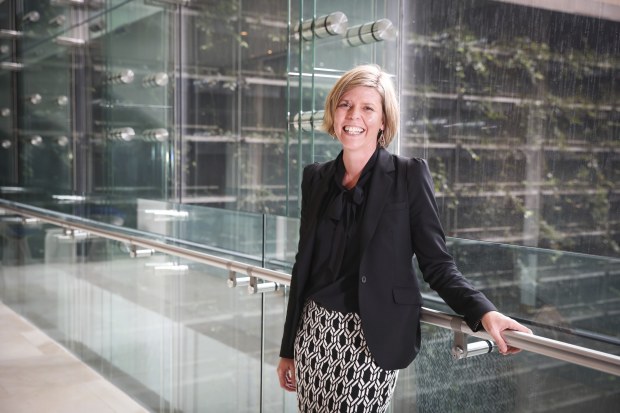Transition rules sped up as emissions target set

Australia’s sustainable finance industry has expedited work on a new taxonomy to direct funding from banks and global investors, as two of the country’s biggest lenders get tougher on new projects and Europe softens its stance on new gas and nuclear.
Westpac joined National Australia Bank in curtailing funding for new oil and gas projects and said it would introduce science-based targets to curb its most emissions-intensive lending to power generators and the cement sector, despite Europe’s inclusion of new gas in its sustainable finance taxonomy.

Kristy Graham, Australian Sustainable Financial Institute chief executive. Renee Nowytarger
The Australian Sustainable Finance Initiative (ASFI) has brought forward its work to define a local taxonomy to this year from 2023, to give Australia a stronger voice at the international table when it comes to setting frameworks for sustainable definitions.
The taxonomy is expected to tackle rules for transition financing for fossil fuels and the role they will play in transitioning Australia to net zero emissions.
“Given the European Union reporting requirements are coming in sooner, the sense is that if Australia has not at least started work in this area we will become a rule taker of rules that are not necessarily fit for purpose in an Australian context,” ASFI chief executive Kristy Graham said.
“We would be accepting internationally set rules that may not be appropriate for our context, particularly with regard to the transition challenge many sectors face.”
In July, the EU voted down a proposed ban on the inclusion of new gas and nuclear projects in its taxonomy, in a move that could have positive implications for new Australian projects. Under the definitions, gas and nuclear developments can raise transition finance where they can demonstrate credible transition plans.
Role for private investment
“As the European Commission believes there is a role for private investment in gas and nuclear activities in the green transition, it has proposed the classification of certain fossil gas and nuclear energy activities as transitional activities contributing to climate change mitigation,” the commission said.
“The inclusion of certain gas and nuclear activities is time-limited and dependent on specific conditions and transparency requirements.”
Moody’s ESG Solutions unit said sustainable bond issuance fell sharply in line with the global rout in markets over the first half, but Moody’s is tipping a rebound over the latter part of the year.
The unit said challenging market conditions forced global sustainable bond volumes to fall 19 per cent to $US225 billion ($323 billion) compared with the second quarter of 2021, but increase 2 per cent on the first quarter of 2022.
“We continue to forecast an increase in sustainable bond volumes in the second half of the year and maintain our expectations of around $US1 trillion issuance for all of 2022,” said Moody’s vice president for sustainable finance Matthew Kuchtyak.
While aggregate volumes are down 21 per cent over the first half at $US447 billion, sustainable bonds are proving resilient and comprise a bigger proportion of the total during the second quarter.
“Despite challenging financing conditions so far this year, sustainable bond volumes are down less than the broader market and represented 15 per cent of global total issuance in the second quarter, the highest quarterly share on record,” Mr Kuchtyak said.
“The sustainable bond market is therefore proving resilient, suggesting a high likelihood of a swift bounce in volumes once market conditions improve.”
ANZ said the rapidly evolving policy and regulatory landscape would influence the trajectory of a sustainable bond market, including the new classifications by the EU.
“Beyond the continued growth and diversification of sustainable bonds, there are many policy, regulatory and market-driven developments with implications for volumes,” ANZ said in its second-quarter sustainable finance update.
“Notable developments in recent months include the classification of some nuclear and gas projects as eligible under the EU taxonomy, updates to the Common Ground Taxonomy, a US Supreme Court ruling on greenhouse gas emissions regulation and the European Central Bank tilting its corporate bond portfolio toward greener companies.”
Subscribe to gift this article
Gift 5 articles to anyone you choose each month when you subscribe.
Subscribe nowAlready a subscriber?
Introducing your Newsfeed
Follow the topics, people and companies that matter to you.
Find out moreRead More
Latest In Financial services
Fetching latest articles